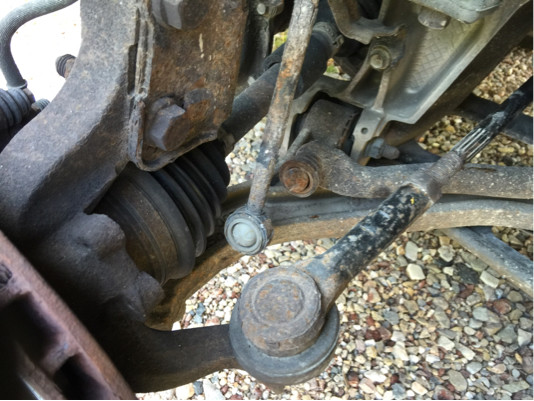The vehicle in question is a front-wheel drive. FWDs are sensitive to front wheel alignment, since the front suspension and wheel linkages work under different conditions when accelerating and not accelerating:
- on acceleration, the wheels push backwards on the road, thus tend to move the front suspension forwards relative to the vehicle.
- on de-acceleration, the wheels are now pushing forwards against the road in the direction of travel to slow down the vehicle, and in reaction are pushing backwards against the suspension.
This also happens in RWD vehicles, but is limited to the rear axle. Thus, there is no connection between accelerating and steering. A badly aligned front wheel on a RWD will alter steering at all times, not just on acceleration. On a FWD with the steering a bit off, however, the wheels push against the suspension slightly to one side - giving the symptoms you have seen.
The net result is that this vehicle needs the front wheel alignment to be looked at. If it has been going on for some time, it should be apparent as increased and non-symmetrical usage on one of the front tires: one side will appear more used than the other. Besides making vehicle reactions less easy to foresee, it is also lowering tire life since both front tires will need to be replaced at the same time.

